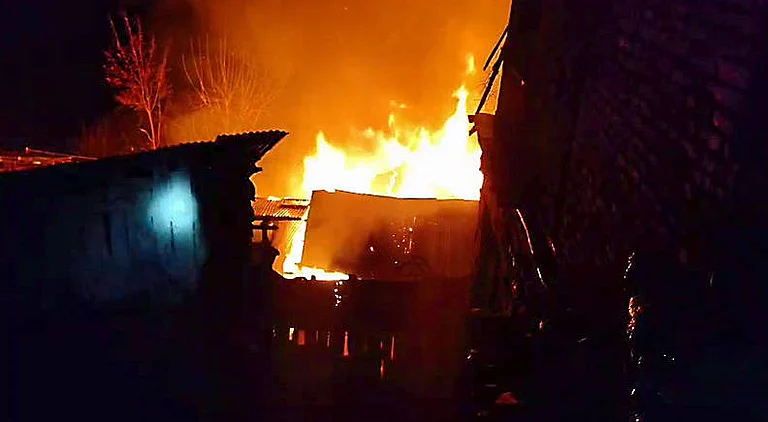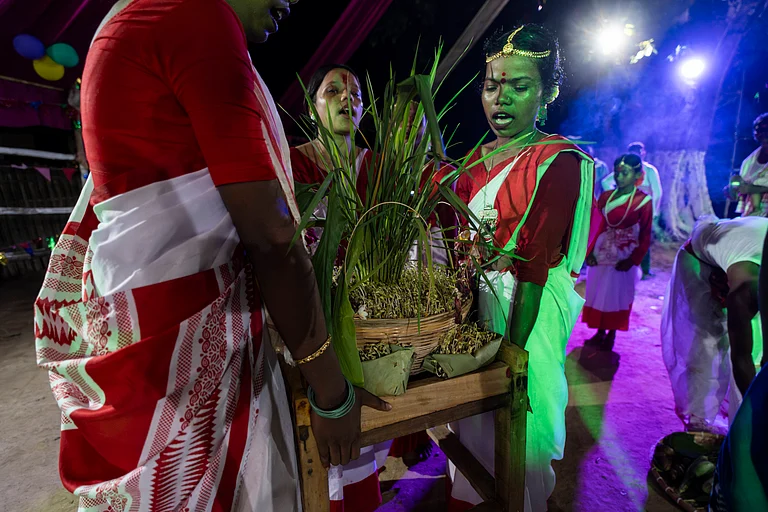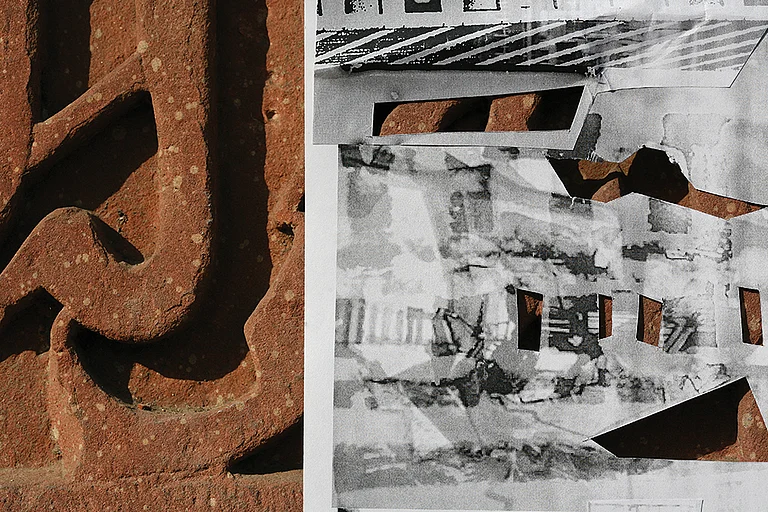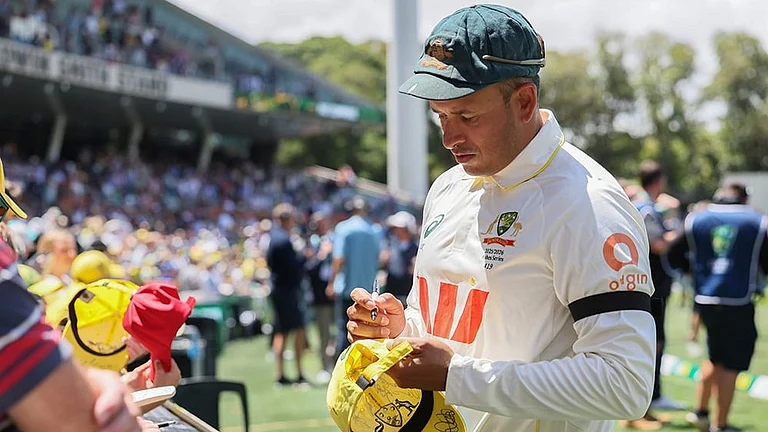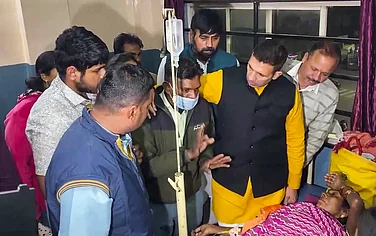While thousands of tourists for decades now have stood at Tiger Hill view point to witness the sun paint the colours of a new dawn on the world’s third-tallest peak, the fabled Kanchenjunga, the people of Darjeeling have been holding vigil for a new dawn in the politics of the hills.
Fraught between the desire for proper development, ethnic prestige, the demand for statehood and the authoritarianism of its political forces, the ‘Queen of the Hills’ is a deeply-troubled land.
Recent developments, however, indicate a new dawn might be breaking out in the political landscape here. Two new political parties launched less than a year ago have taken effective control of Darjeeling’s administration. This is expected to lead to a phase of Calcutta-Darjeeling cooperation and flourishing multi-party politics in the hills, according to the predictions made by observers of local political developments.
More importantly, neither of the two parties have made an aggressive pitch for Gorkhaland statehood, which is a departure from the general political trend of the hills where parties pushing hard for a separate state usually enjoyed popular sentiments since the mid-1980s.
The first surprise came from the Hamro Party (HP) that launched in November last year. In March, they won 18 of the total 32 seats of the Darjeeling municipality.
Nine of these seats went to the Bharatiya Gorkha Prajatantrik Morcha (BGPM) that was formed in September last year. Of the remaining five seats, three went to Bimal Gurung’s Gorkha Janmukti Morcha (GJM) that had won all 32 seats uncontested in 2011 and 31 of 32 in 2017, contesting with the Trinamool Congress (TMC). This time, though, the GJM contested in alliance with the TMC that won the two other seats. The Bharatiya Janata Party (BJP)-Gorkha National Liberation Front (GNLF) alliance, which won the Darjeeling and Kurseung assembly seats a year ago, drew a blank.
In June, the BJP, the GNLF and the GJM boycotted the semi-autonomous Gorkhaland Territorial Administration (GTA)’s election on multiple grounds, while the BGPM swept the polls, bagging 27 out of 45 seats. The Hamro Party came second, bagging eight seats. The TMC won five. Independents, allegedly backed by those who officially boycotted the elections, won the remaining five.
The GTA elections were more important than the civic polls, as the whole of Kalimpong district, and Darjeeling and Kurseong sub-divisions of Darjeeling district come under the GTA. Plus, from some areas of Siliguri sub-division.
In a matter of three months, two new political parties promising to usher in a new dawn of development through cooperation with the state government are at the helm of affairs in the hills that have belonged to political dictators for nearly three decades—two decades of the GNLF’s Subash Ghising, followed by a decade of Bimal Gurung.
“The BJP-GNLF-GJM alliance swept the 2019 Lok Sabha election and the assembly by-election by promising a permanent political solution for Darjeeling. This is the domain of the Union government, which has to take the necessary steps. But they have done nothing. As long as the Union government takes no step towards what they called a permanent political solution, the two new parties, the BGPM and the HP, are going to rule the hills,” says Manoj Bogati, a Nepali language poet and journalist based in Kalimpong town.
In October 2020, Gurung dumped the BJP, accusing it of doing nothing to keep their promise, and joined hands with the TMC. The BJP has never defined “permanent political solution” as statehood—directly supporting bifurcation of West Bengal could seriously harm their prospects in the rest of the state—but it is expected to offer greater autonomy than what is currently enjoyed under the GTA.
“There is no gain in running into a conflict with the state government. We have to make sure the local development needs are met. We have had enough of politics of sentiment. Now, it’s time for some pragmatic politics,” BGPM head Anit Thapa said after the GTA election victory. He is all set to head the GTA. Chief minister Mamata Banerjee congratulated him over phone and he is scheduled to meet her in Calcutta in the second week of July.
Hamro Party chief Ajoy Edwards has made it clear that statehood is their long-term goal but it is to be pursued only through peaceful means. Not through strikes and violence— modes previously adopted by the GNLF and the GJM. In both the Darjeeling municipal election and the GTA polls, the HP’s campaign focused on the basic needs—health, water and tourism.
A complex political history
The late Subash Ghising-led GNLF had ruled Darjeeling and its neighbourhood with an iron hand since the mid-1980s. Ghising ran the semi-autonomous Darjeeling Gorkha Hill Council (DGHC), formed in 1988 after the GNLF led a violent movement for a separate state of Gorkhaland, until Bimal Gurung’s rebellion in 2007 where he accused his guru Ghising of having made a compromise with the state government.
Gurung’s rebellion for statehood led to the formation of the GJM, which replaced the GNLF as the hills’ principal, and in effect, the sole political force. However, it agreed to a compromise in 2011—after the TMC toppled the 34-year-old Left Front regime—when the Gorkhaland Territorial Administration (GTA) was formed with greater autonomy than what the DGHC enjoyed. The GTA was formed as a result of a tripartite agreement between the state government, the Centre and the GJM.
With Gurung’s support, the BJP easily won the Darjeeling Lok Sabha in 2009 and 2014. After running the GTA for almost its first tenure of five years, the GJM in 2017 discarded the GTA citing it lacked autonomy and launched a violence phase of statehood movement, leading to a 105-day bandh of the hills.
The bandh led to a split in the GJM, with Anit Thapa and Binoy Tamang launching a rival faction ready to cooperate with the state government to restore peace and development. This weakening of the GJM allowed the GNLF, now led by Subash’s son Man Ghising, to make a comeback.
In 2019, the BJP swept the Darjeeling Lok Sabha election and Darjeeling Assembly bye-election, thanks to the support from Gurung and GNLF. The Thapa-Tamang faction, which joined hands with the TMC, was routed. This happened on the expected lines of voting patterns in the hills, where people tend to vote against the force ruling West Bengal.
However, Gurung, who had been underground since 2017 after being booked under the Unlawful Activities (Prevention) Act, came out of hiding in October 2020 and sided with the TMC camp ahead of the 2021 assembly election. The assembly election gave first hints of a departure from the previous trend of one-party dominance—former Gurung faction spokesperson B P Bajgain, who joined the BJP ahead of the election, won from Kurseung; GNLF’s Neeraj Zimba retained Darjeeling seat on a BJP symbol; and the Thapa-Tamang faction’s Ruden Lepcha won from Kalimpong.
After Binoy Tamang left the Thapa-Tamang faction, Thapa launched the BGPM in September. Tamang joined the TMC thereafter. In November, GNLF leader Ajoy Edwards, owner of the iconic restaurant Glenary’s, launched the Hamro Party.
The Darjeeling municipal election in March was the first local election held in the hills since the 2017 statehood agitation. The successful conduction of the civic poll encouraged the government to conduct the GTA elections due since 2017. The statehood agitation had broken out just before the completion of the GTA's first tenure. Now, even though the GNLF moved the Calcutta High Court seeking to stop the government from conducting GTA elections, calling the body unconstitutional, the court gave the government the go-ahead for the polls.
The GNLF and the BJP subsequently boycotted the election, refusing to give legitimacy to the GTA. Gurung boycotted it, too, as he wanted the elections to be deferred. The elections recorded only 56 per cent polling, but a record number of 277 candidates contested in 45 seats; 171 being independent candidates. A rare scene for elections in the hills.
According to Kurseong resident Chepal Sherpa, a former scholar at New Delhi’s Jawaharlal Nehru University (JNU), the GTA elections unfolded many new scenes.
“Earlier, elections under GNLF and GJM regimes used to be one-party affairs. This time, people were free to vote for anyone and there were many choices, with an unprecedented number of independent candidates in the fray,” he says.
In his observation, this election also showed how the BJP and the Centre had let people down with non-fulfilment of their promise of a permanent political solution.
“The election results show that for the time being, people have settled with the development plank of the GTA, as lofty promises are being viewed as promises without concrete results,” says Sherpa. Now, the state government is expected to hold elections in the two other hill municipalities—Kalimpong and Kurseung—where the terms are coming to an end soon.
Still more new twists may be awaiting the hills, as yet another new party is all set to be launched to press for Gorkhaland state, though through non-violent means. This party is being initiated by Mahendra P Lama, a professor of international relations at JNU. He is originally from Darjeeling and was the founding vice-chancellor of Sikkim University. Lama had contested the 2014 Lok Sabha election as an independent and secured 55,000 or five per cent of the polled votes. Later, he joined the Jan Andolan Party, a currently-inactive breakaway faction of the GJM.
"We don't see Gorkhaland as a state belonging solely to the Gorkhas as pitched by the earlier movements. It will belong to the Bengalis, Marwaris and whoever else lives in this part. In our understanding, statehood is more of a question of geography than ethnicity. Statehood will help Darjeeling prosper and a prosperous neighbour would also benefit West Bengal," Lama, who also serves as Sikkim's chief economic advisor, tells Outlook.
Political vacuums have repeatedly sprung up surprises in the hills. Whether the present state of peace is just another lull before a new storm or any different remains to be seen.







